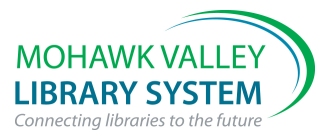 |
START WITH SCIENCE KITS
Science Programs for Children Ages 4 and 5 |
Objectives
- To introduce children to rainbows.
- To introduce children to colors.
- To introduce children to different lenses.
- To explore the use of light.
|
Books : (In kit)
- A Rainbow of My Own by Don Freeman
|
Equipment : (In kit)
- 1 Bedsheet (white)
- 2 Binoculars
- 30 Color Paddles (10 each of blue, yellow, red/pink)
- 6 Fresnal magnifying lenses (2” x 3.25” in slip cases)
- 1 Lamp (Crook neck lamp with 15’ extension cord)
- 18 Magnifying glasses (6 blue, 8 orange, 4 yellow)
- 1 Poem – Rainbow Fair
- 6 Prisms (2 ½” right angle prisms)
- 11 Rainbow eyeglasses (Colored cardboard with rainbow lenses)
|
Consumables : (To be supplied by you)
- Paper copies of the bookmark are included in the kit. PDF and JPEG copies are available here.
- PDF – 4 bookmarks per page. Ready to print in color.
- JPG – single high quality jpeg image.
|
Resource Book : (Contact your local library to borrow)
- Richards, Roy. 101 Science Tricks: Fun experiments with everyday materials. Sterling Pub. Co., 1990.
- Stetten, Mary. Let’s Play Science. Harper & Row., 1979
- Willow, Diane. Science Sensations. Addison-Wesley., 1989
|
Bookmarks : (In kit)
Program
- Objectives
- To introduce children to rainbows.
- To introduce children to colors.
- To introduce children to different lenses.
- To explore the use of light.
- Introduction
- What does optical mean? (of or relating to the eye)
- Do things always look the same? How can we make them look different?
- How do we make colors? What are some of the colors we know?
- Program
- Read RAINBOW OF MY OWN by Don Freeman.
- What do we need to make a rainbow? When do we see rainbows? What are the colors in the rainbow?
- Use fingerplay “Rainbow Fair” to help remember about rainbows.
- Pass out rainbow glasses and have them look around them and move their heads while wearing them.
- Introduce the prisms. (These are plastic for safety’s sake but it also means they are not particularly good at refracting the light to make rainbows.) They are most effective when held near your eye making rainbow fringes on things and also giving a different view of things since you are likely to see your feet when looking straight ahead.
- Pass out magnifying glasses and explain how you hold them closer to the object you want to see and not just up at your own eye. How do things look? What happens if you use the magnifying glass while wearing the rainbow glasses?
- Introduce the fresnal magnifying lenses. These are the kind which often appear on back windows of mobile homes. They are most effective when held up against a window to look out and see a larger view of things.
- Introduce binoculars. See if the children know what they are called and how they are used.
- Introduce the color paddles and see what colors result as they are mixed.
- Allow time for exploration with the various glasses, lenses, color paddles, etc. Encourage different combinations of things for different results.
- If your space and room allows, there is a bedsheet and a lamp to use for making shadows – either elaborate or just the favorite wiggling of fingers.
- General
- This kit works well with younger children since little coordination is needed. Older children are more likely to experiment with combinations, but it isn’t necessary.
- Natural daylight is wonderful, but artificial light is fine.
|
Evaluation
Please print this evaluation, complete it and return to MVLS in the SWS red envelope.
Topics | About the Kits | Lending Policy

